How to Effectively Collect and Act on Employee Feedback to Improve the Employee Experience for Retail
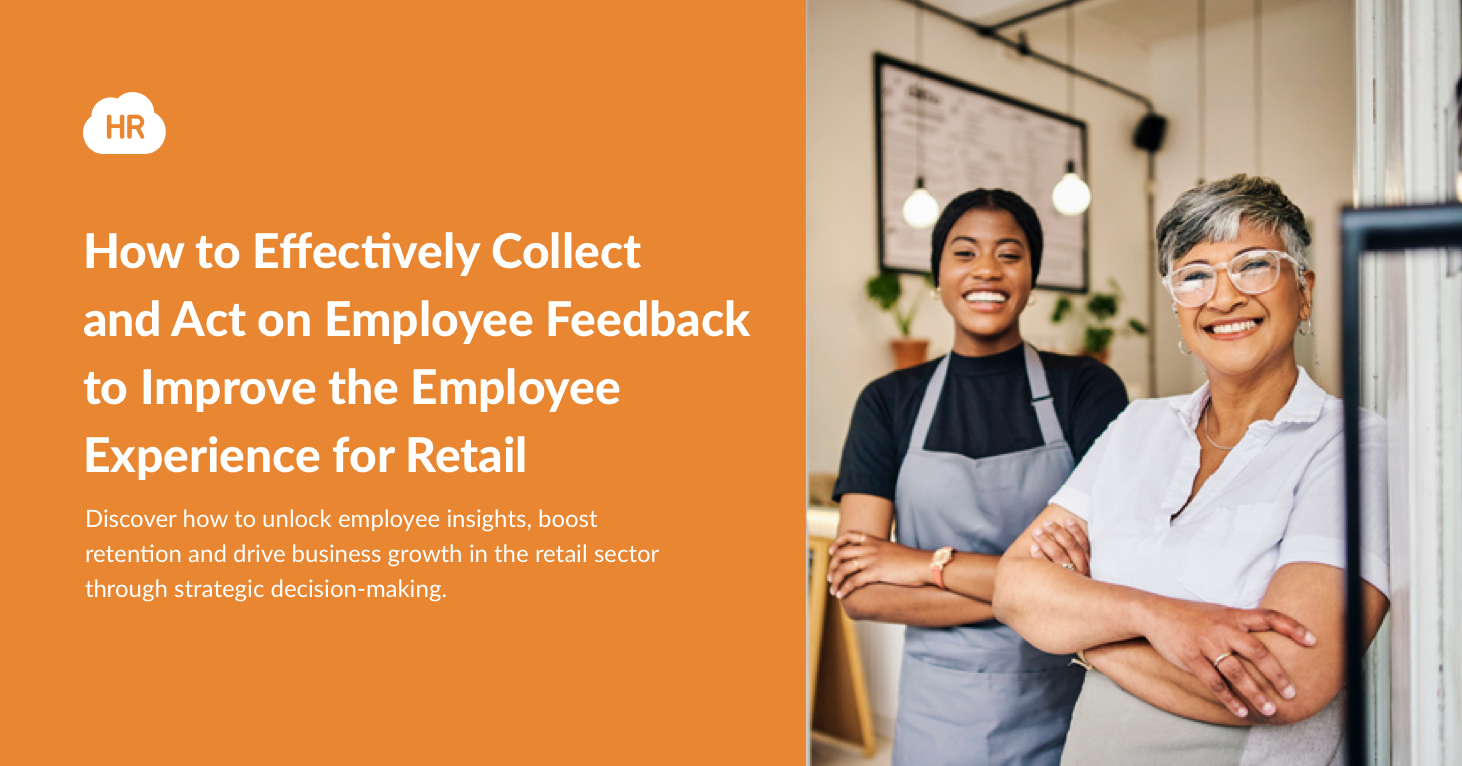


 Cut onboarding time
by 60%—here's the
Ultimate Checklist
that helped do it.
Cut onboarding time
by 60%—here's the
Ultimate Checklist
that helped do it.

In the retail industry, customer experience depends on customer interactions with employees.
Consequently, employee experience is a paramount concern for management. So, how can we enrich your employee experience?
The answer lies in effectively collecting and leveraging employee feedback using modern employee engagement tools.
This article will feature the practical and technical aspects of employee feedback collection. You'll learn about the necessary employee engagement apps and research methodologies.
By using the feedback strategies and employee survey tools laid out here, you will be well on your way to creating an enhanced retail environment where employees are motivated, customers are satisfied, and your business thrives.
1. Foster a Feedback Culture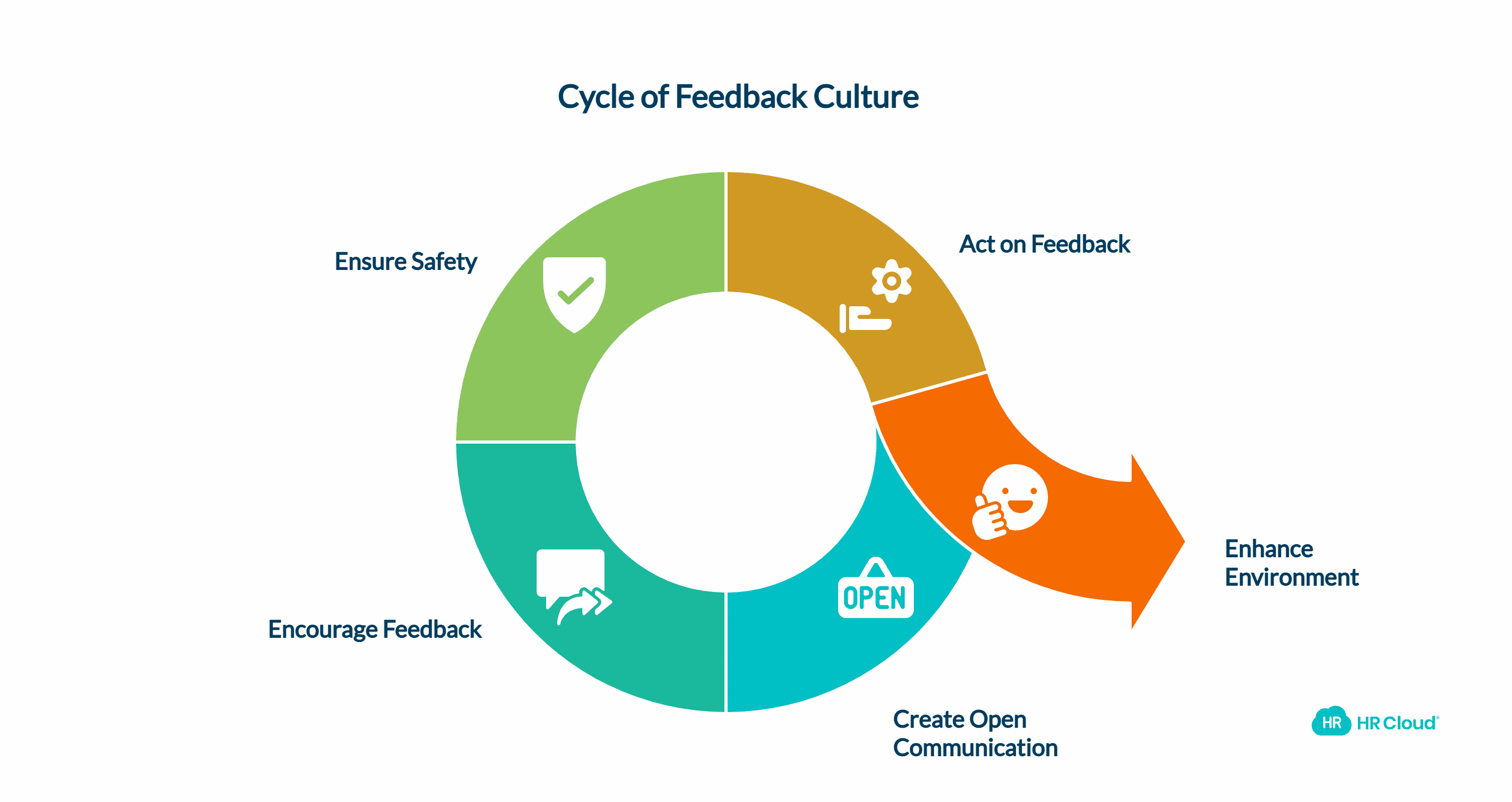
Before you can collect employee feedback, you must create an environment where people feel like their voices matter.
Building an environment where feedback is encouraged means it has to be more than just a one-off survey.
Feedback must be normal and seamlessly integrated into your company's culture and daily operations.
Encourage your employees to freely share their thoughts, ideas, and areas of concern. This can be achieved by establishing open communication channels, such as weekly team meetings, suggestion boxes, an online feedback platform, or even generating QR codes that link directly to anonymous feedback forms.
It's crucial that employees feel safe and comfortable giving feedback. This means ensuring there is no fear of retribution or negative consequences for speaking the truth.
Encourage honesty and transparency by ensuring anonymity or confidentiality if requested.
Building a positive feedback culture is not an overnight task. It requires time, patience, and continuous effort from management and employees. However, management must take the lead. Invest in training focusing on communication, empathy, and constructive feedback to foster a more open and supportive workplace culture.
By creating a culture that not only welcomes but also acts on feedback, you're setting the stage for an enhanced retail environment. Always remember, your employees are your first customers. If they're satisfied, your customers will be too.
2. Define Goals and Metrics
Collecting employee feedback should always be guided by clearly defined goals and metrics.
First, identify what the feedback will be used for—is it to inform changes in company policy, direct HR initiatives, or employee training programs, or perhaps to address different areas?
Once your objectives are clear, set up specific, measurable goals. Create metrics to track the progress and effectiveness of your feedback tracker.
Consider These Potential Employee Engagement Metrics:
-
Employee Happiness Index: This metric attempts to measure employee satisfaction within your workplace. It can be obtained through regular engagement surveys, asking employees to rate their happiness on a scale. Ask questions covering diverse areas like work-life balance, relationships with peers and managers, and personal growth opportunities.
-
Retention Rate: A high retention rate is a strong indication of a positive work environment. Tracking this metric over time can help you understand the impact of your initiatives on employee satisfaction and loyalty.
-
Productivity Metrics: Increased productivity is often a positive outcome of an improved employee experience. There are various ways to measure productivity, such as tracking hours worked versus tasks completed or looking at sales figures or customer satisfaction ratings.
Once your goals and metrics are finalized, it's crucial to decide on your research methodologies. Will you use surveys, interviews, focus groups, or perhaps a combination of these? Your methodology should align with your goals and the type of data you need to collect, and consider the integration of data integration tools where appropriate.
Always remember the ultimate goal of collecting and acting on feedback is to enhance the employee experience. This, in turn, positively impacts customers, leading to a thriving retail business.
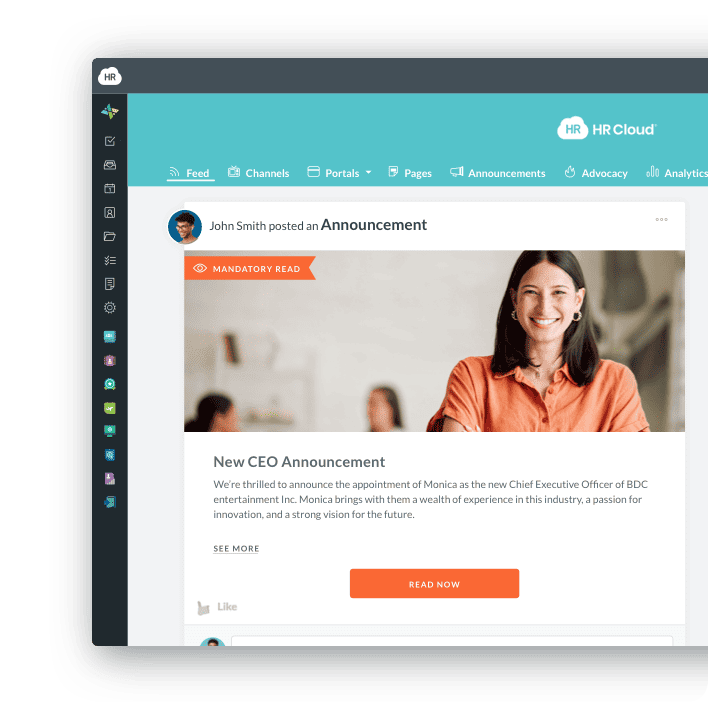
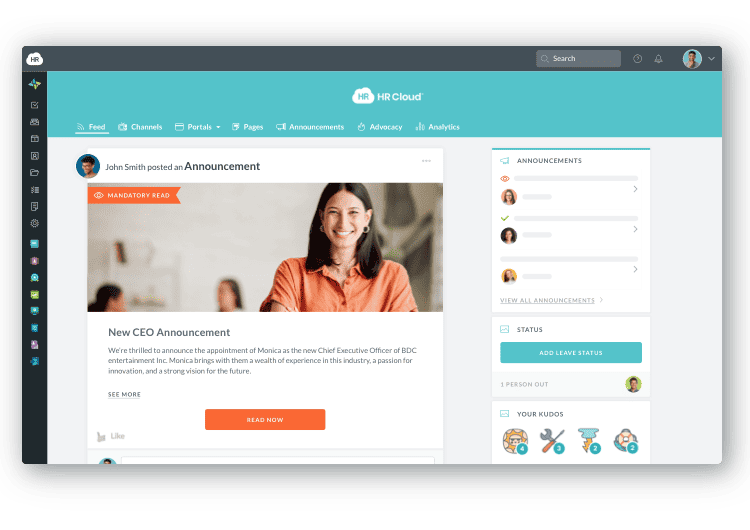
3. Choose a Methodology
Now that we've firmly established the importance of setting clear goals and selecting appropriate metrics, it's time to dive into the next critical step: choosing a methodology for feedback collection.
Different methods cater to different needs, and understanding their strengths and weaknesses is key to picking the most effective approach for your retail business. Let’s dive in.
Survey Method
Surveys are a popular method for collecting employee feedback due to their efficiency and ease of use.
They enable you to collect quantitative data from a large group of employees at once. This may include metrics like job satisfaction, work-life balance, or perspective on company policies.
Using an employee survey tool allows you to distribute surveys easily and anonymize responses. As a result, you’ll encourage honesty among respondents. However, surveys may not capture the depth of an employee's feelings or experiences due to their limited responses to numbers and scores.
Focus Groups
Focus groups offer a more interactive way to collect feedback. They allow for open-ended discussions that may reveal deeper insights into employee concerns, attitudes, and perceptions.
Participants can react to each other's comments, stimulating ideas that may not have surfaced in an individual context.
However, they can be time-consuming and not feasible for larger organizations. It's also crucial to address potential groupthink and ensure a safe space for open dialogue.
One-On-One Interviews
One-on-one interviews provide an opportunity for personal, in-depth conversations. This method allows for a deeper understanding of individual employee experiences and can help uncover nuanced insights.
Interviews can be conducted face-to-face, over the phone, or via video conferencing. They are especially valuable for addressing sensitive topics that employees may not feel comfortable sharing in a group setting.
However, they are resource-intensive and may not represent the general workforce.
Suggestion Boxes
A classic feedback collection method, suggestion boxes allow employees to anonymously submit their ideas, grievances, or concerns.
This method can encourage candidness as it ensures anonymity. However, feedback is often limited to what the employee chooses to share and lacks the opportunity for immediate follow-up or clarification.
Remember, the choice of methodology should be dictated by your specific goals, the nature of the feedback you're seeking, and the resources available.
You can also combine several methods to get a comprehensive understanding of the employee experience. Consider using an engagement survey platform that supports multiple feedback mechanisms for a more holistic approach.
4. Tools for Collecting Feedback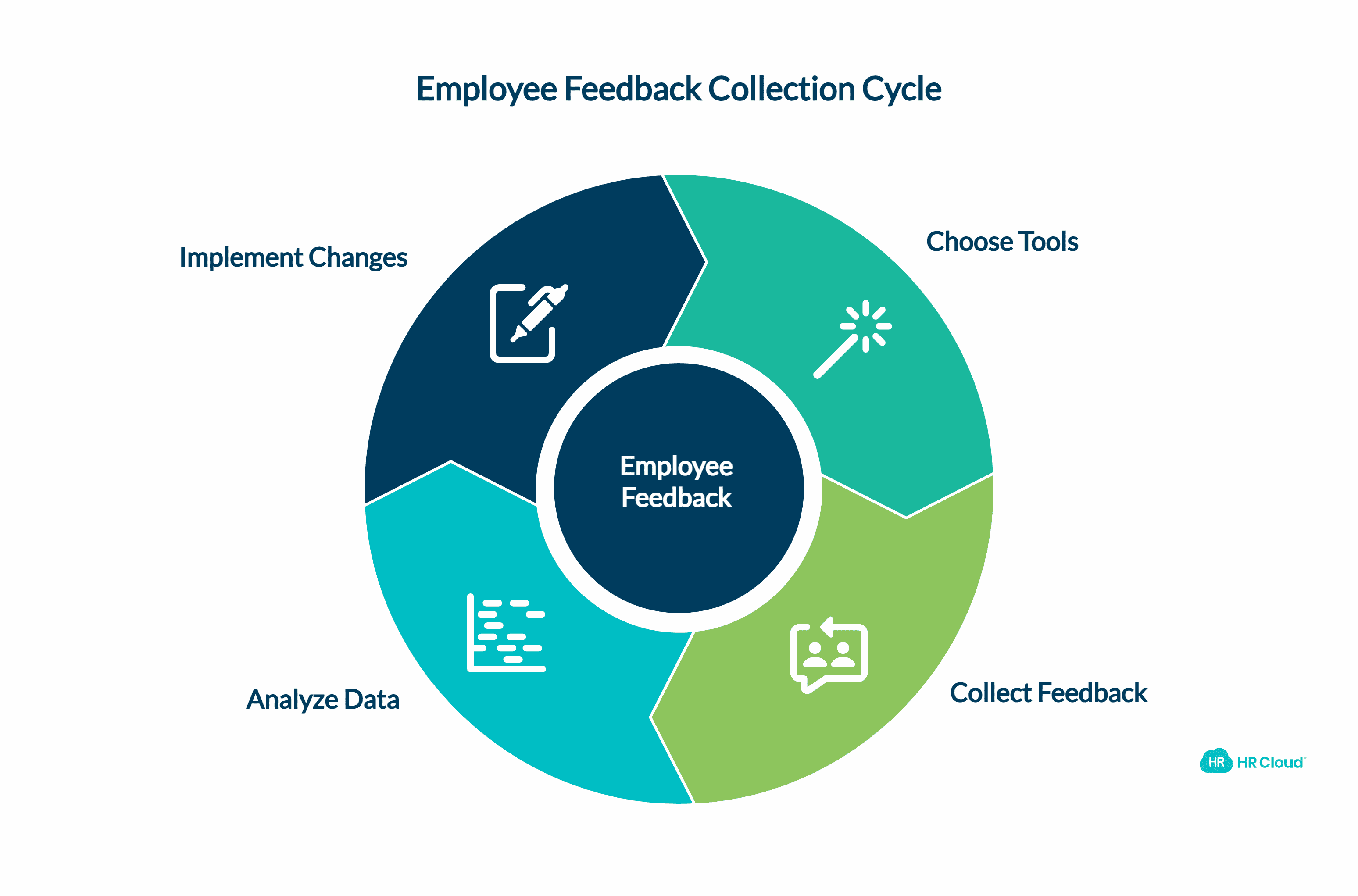
Choosing the right tool for collecting feedback is as important as choosing the right feedback-collecting method. The following are some of the most effective employee feedback tools to make this process seamless while providing valuable insights.
Online Survey Platforms
Online survey platforms have become a cornerstone for collecting employee feedback.
You can use form tools, but your best option is to use a dedicated employee engagement solution like Workmates by HRCloud.
This makes it easy to create and deploy surveys and has robust analysis and reporting features to learn how engaged your retail employees are.
Employee Engagement Software
While online survey platforms are great, you’re best served by more comprehensive employee engagement systems.
By working with Workmates employee engagement solution, you can not only collect feedback and run pulse survey tools but also view results in the context of other work factors.
This tool integrates itself into the whole employee lifecycle, from recruitment to productivity to post-employment offboarding. This means that you have a substantial amount of data across the entire employee lifecycle to help you learn more about their concerns and experiences.
Suggestion Boxes and Open-Door Policies
Traditional methods are still crucial in collecting feedback. A physical or digital suggestion box allows employees to share their thoughts anonymously, encouraging candid feedback.
An open-door policy, on the other hand, sends a clear message to your workforce that their opinions are appreciated and valued, fostering a culture of transparency and mutual respect.
Remember, the key to successful feedback collection is choosing tools that align with your company's needs and culture. Whether you opt for a state-of-the-art employee feedback platform or a traditional approach, the goal is to create an environment where employees feel comfortable sharing their insights and experiences.
5. Ask the Right Questions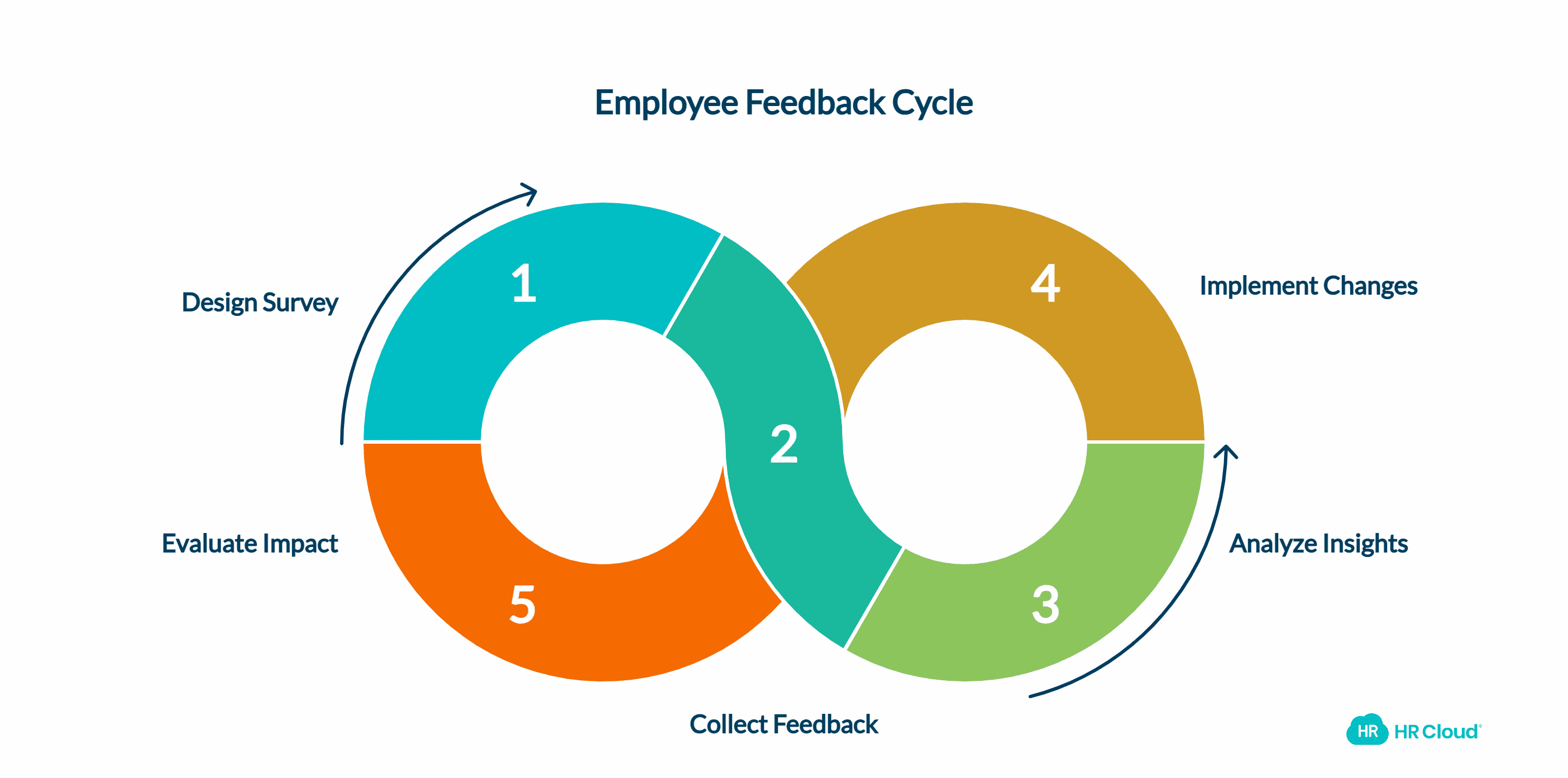
Asking the right engagement survey questions changes everything when collecting employee feedback.
The questions should be open-ended, specific, and directly linked to your goals and metrics.
For instance, if you're trying to gauge the effectiveness of a new management style, a question like ‘How has the new management style affected your daily work?’ would be much more effective than a simple ‘Do you like the new management style?’.
Make your questions specific and relevant. Instead of a broad query such as ‘How do you feel about the company culture?’, ask something like ‘What aspects of our workplace culture do you believe could be improved for better team collaboration?’. This will give you actionable employee insights that go beyond a mere assessment.
Remember, your goal is to encourage honesty and transparency, so always assure employees that their feedback will remain confidential.
By doing so, you create a safe space for employees to voice their genuine thoughts and suggestions, empowering you with the insights needed to improve and grow as an organization.
When designing your surveys, consider using pre-made survey templates to save time and ensure you're asking the right questions. Pay attention to survey design, as a well-structured survey can significantly improve survey response rates and the quality of feedback received. Additionally, incorporating real-time feedback options can provide immediate insights into employee sentiment and allow for quick action on pressing issues.
6. Analyze and Act on Feedback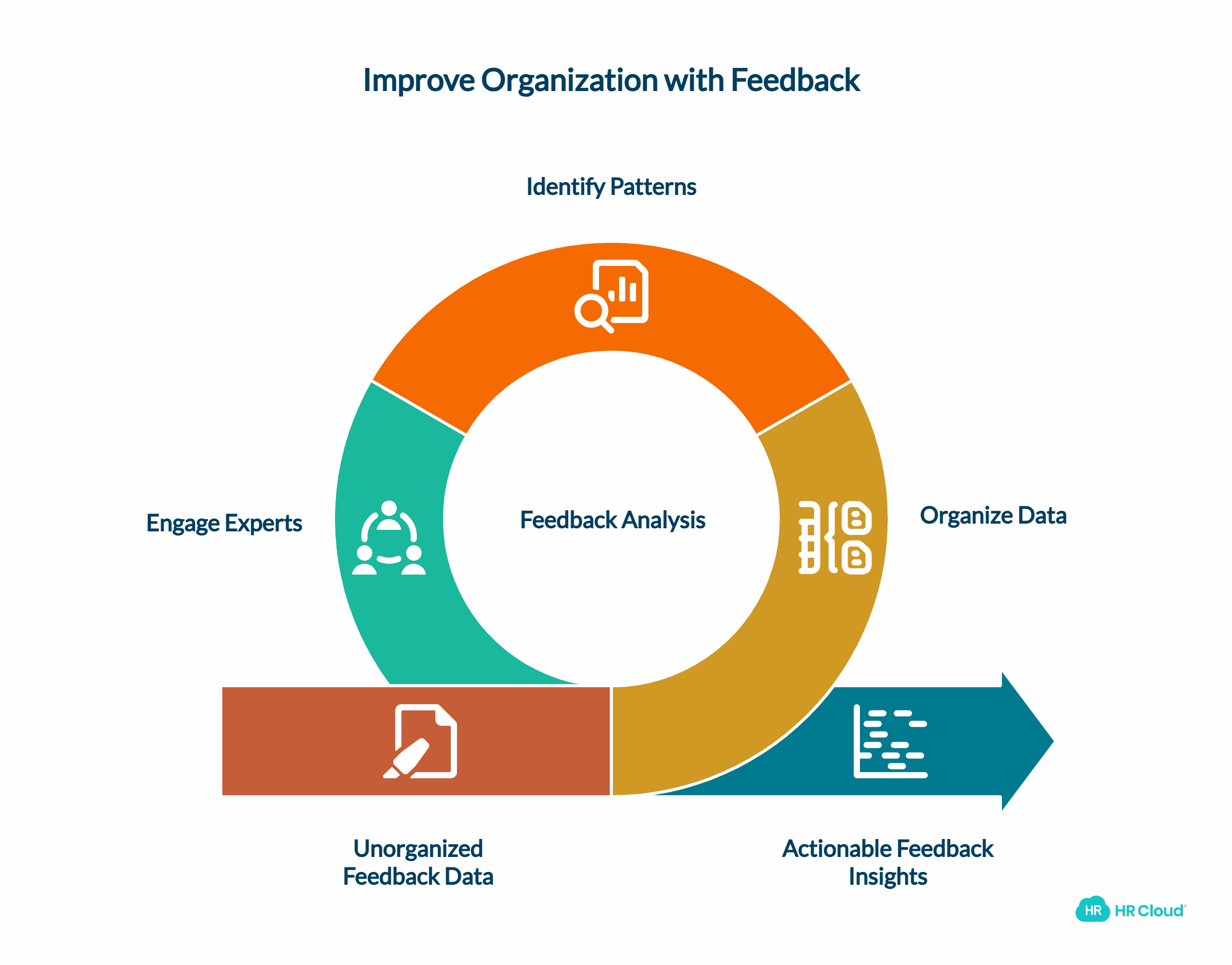
Analyzing and acting on the feedback you receive is a crucial step in improving your organization. Here's how to do it effectively:
-
Organize Your Data: Use tools like Excel or Google Sheets to structure your feedback data for analysis. Categorize feedback based on themes, departments, or specific issues for easy pattern and trend identification.
-
Identify Patterns and Trends: Dive deep into the organized feedback to find recurring themes or patterns, which can highlight areas for improvement or strengths to be enhanced. You can do this manually and use your intuition to see what emerges.
-
Engage Experts: If required, involve professionals specializing in data analysis or employee sentiment analysis. They offer unbiased views and thorough feedback analysis.
Today, you can easily carry out analysis and reporting with HR Cloud. We also help with people analytics to show you a deeper picture of your employees' experience throughout our business. Utilizing advanced survey analytics and employee engagement analytics can provide deeper insights into your workforce's sentiments and needs.
7. Communicate the Results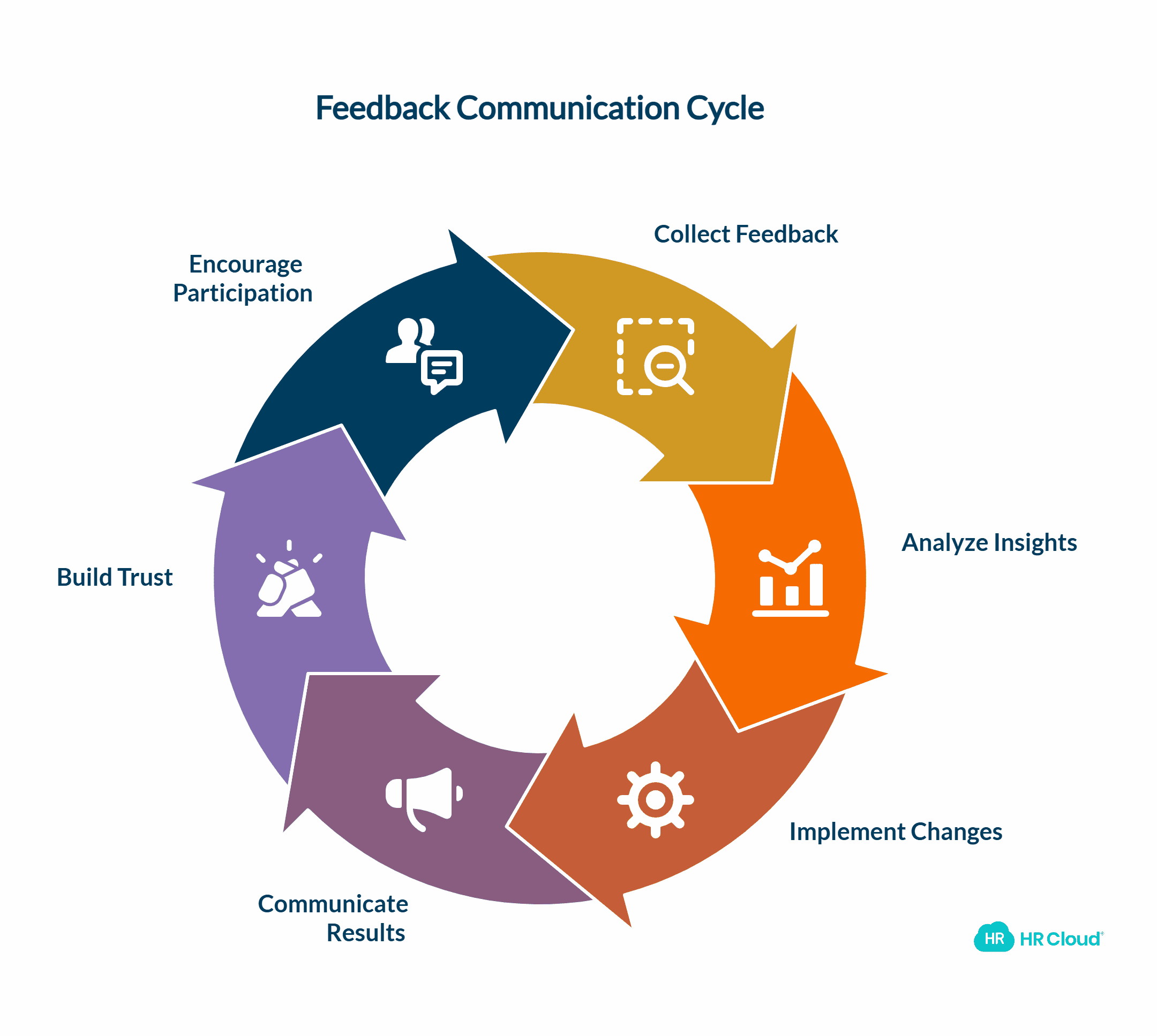
Feedback only matters if you use it. What’s important is to communicate the outcomes of your survey, focus group, or open-door interviews to all participants.
This includes not only the employees who provided the feedback but also the management team responsible for actioning the insights.
As a part of this communication process, you should explicitly outline the changes that will be implemented due to the feedback. Whether it's a modification in workflow, introduction of new employee communication tools, or a shift in company policy, each action plan should be detailed clearly. And explain how these changes will benefit employees.
Communicating your feedback collection results builds trust and shows that your retail business not only values the feedback provided by the employees but also takes concrete actions based on it.
This level of transparency enhances employee morale, encourages participation in future feedback initiatives, and grows your business.
8. Leverage Feedback and Boost Employee Experiences in Retail
You cannot overestimate the value of employee feedback in the retail sector.
Feedback helps understand your employees' experiences, find areas for improvement, and support strategic decisions that drive business growth.
It also fosters a culture of transparency and continuous feedback, which results in better employee retention and stronger team dynamics.
So, take action today and collect feedback from employees in your retail business effectively with HR Cloud's employee experience platform!

Keep Reading
The Hidden Metrics of Frontline Success: Beyond Engagement Scores
"What gets measured gets managed, but what gets measured well gets transformed." — Peter
Embracing Diversity: Recognizing Different Cultures in the Workplace
Workplaces today reflect the incredible diversity of the world around us. People bring
From Manual to Automated: A Complete Guide to Digitizing Employee Onboarding for Large Organizations
Sarah Chen, Director of HR at a 7,000-employee healthcare organization, starts her Monday
Like What You Hear?
We'd love to chat with you more about how HR Cloud® can support your business's HR needs. Book Your Free Demo

Build a Culture of Recognition. Boost Engagement. Guaranteed.
Workmates empowers employees to stay informed, connected, and appreciated—whether they’re on the front line, in the office, or remote. Recognition drives 12x higher engagement.Trusted by industry leaders in every sector




Cut Onboarding Costs by 60%.
Take the confusion and follow-ups out of onboarding with automated workflows, digital forms, and structured portals—so new hires ramp faster 3X quicker.Trusted by industry leaders in every sector




